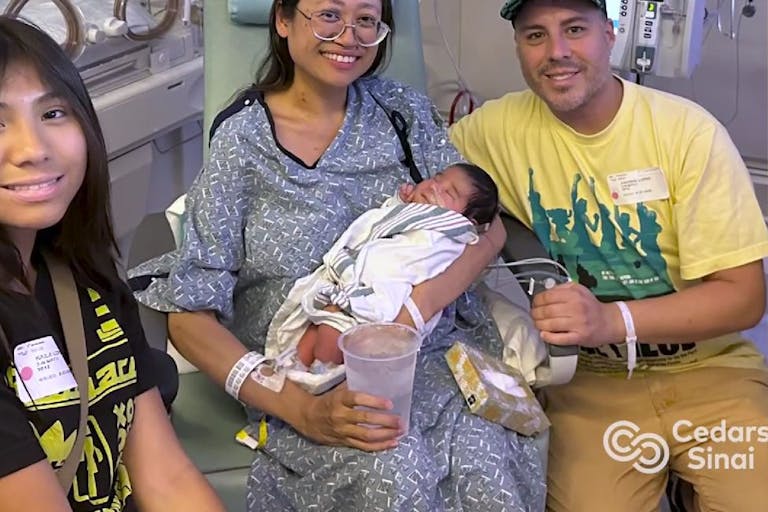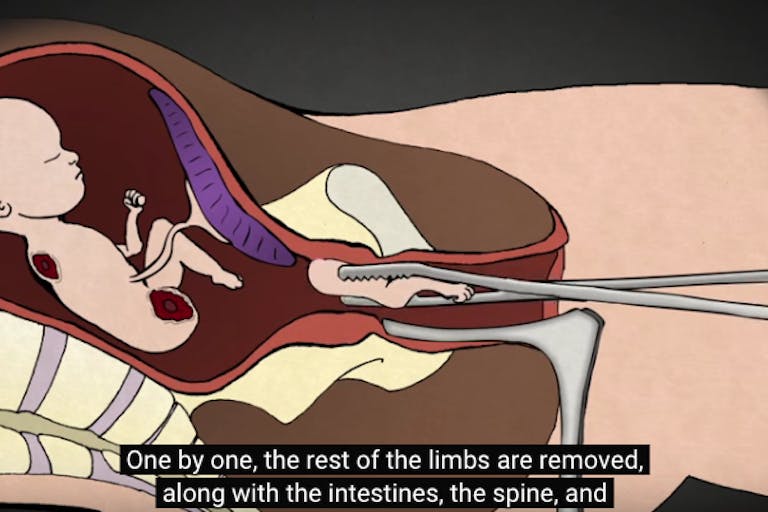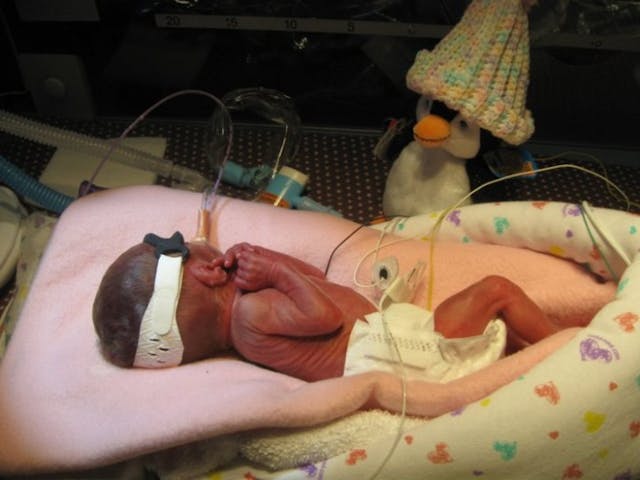
Full term 'miracle' baby born after 'unprecedented' ectopic pregnancy
Bridget Sielicki
·
Live Action’s Abortion Procedures video used in legislative testimony on fetal pain bill
Earlier this year, HR 547, the Pain-Capable Unborn Child Protection Act, was introduced in the Maryland legislature. Maryland would become the 22nd state to pass a law to protect preborn children at 20 weeks from abortion.
The Maryland House Health and Government Operations Committee recently heard testimony on the bill, sponsored by State Delegate Barrie S. Ciliberti. Delegate Ciliberti explained that an abortionist would be required to calculate the age of the preborn child before performing or inducing an abortion.
Karen Cross, Political Director for the National Right to Life Committee, testified in support of the bill, pointing out that preborn children can “certainly” feel pain by that gestational age, as all the structures necessary to experience that pain have developed. [New scientific research indicates babies may feel pain in the first trimester, well before 20 weeks.] To emphasize the pain involved in abortion procedures, Cross referred to testimony from former abortionist Dr. Anthony Levatino, who took part in Live Action’s Abortion Procedures videos.
Dr. Levatino has spoken about the common but brutal D&E procedure, which is the most common second trimester abortion procedure in the U.S. The video below describes what happens:

Later during the committee hearing, opponents of the bill also spoke and were asked questions by State Delegate Sid Saab. Robyn Elliot of Planned Parenthood of Maryland admitted to having watched the video, but would not answer how she felt.
Rochelle Young of the ACLU affirmed her belief in the unconstitutionality of the bill (though similar bills still stand in all but two of the states that have passed them) and would not answer whether she found D&E abortion “inhumane” until asked for the second time. Then, she stated she did not find the procedure, which literally tears apart, limb by limb, to be inhumane.
These non-answers and disturbing admissions are reminiscent of the similar non-answers and difficulty Planned Parenthood President Cecile Richards had when she answered questions before the U.S. Congress in 2015. It is also not the first time Planned Parenthood claimed adherence to science while being dead wrong.
Article continues below
Dear Reader,
Have you ever wanted to share the miracle of human development with little ones? Live Action is proud to present the "Baby Olivia" board book, which presents the content of Live Action's "Baby Olivia" fetal development video in a fun, new format. It's perfect for helping little minds understand the complex and beautiful process of human development in the womb.
Receive our brand new Baby Olivia board book when you give a one-time gift of $30 or more (or begin a new monthly gift of $15 or more).
When Delegate Saab reminded Elliot that “the medical research said that the baby feels the pain,” a heavy silence followed before she brushed off how pro-lifers “have research that they presented. I think there is also research that would reach a different conclusion.” The pro-abortion advocates continued to speak very briefly to the committee with recited talking points.
National Right to Life’s Karen Cross explained why a 20-week ban stands a good chance of being held constitutional by the U.S. Supreme Court, as it would ask the Court “whether there is a compelling interest in protecting unborn children who are capable of experiencing pain from abortion.”
Walter Webber, an attorney with the American Center for Law and Justice, echoed the bill’s constitutionality, explaining that it applies at or after viability, which the Supreme Court has ruled is a permissible time for abortion bans. But, the D&E abortion and other late-term abortion procedures are so brutal and painful that Webber suggested it could be upheld as an anti-torture bill, which he described as “an independent basis.”

One of the most eye-opening arguments in favor of the bill was offered by Dr. Donna Harrison, a board certified OBGYN who is also the executive director of the American Association of Pro-Life Obstetricians and Gynecologists. She explained that abortions are not medically necessary in the first place, particularly these late-term abortions, most which are elective. These children, who have been human persons since the first moment of conception, are able to survive outside the womb, making abortion all the more unnecessary. As Dr. Harrison explained:
It is not medically necessary to perform an elective abortion after the fetus is capable of surviving outside of his or her mother’s womb in order to end a pregnancy. The unborn child could be separated from the mother by delivery, resulting in a live birth, instead of inducing an abortion, using a procedure that is a delivery, which is safer for the mother than an elective abortion at this gestational age.
In either case, separation would happen, but the primary purpose of an elective abortion after viability is not to separate the mother and the fetus, but to ensure that the unborn child is born dead.
The point of survivability was highlighted by another panelist, Tiffany Farley, who works for the Gabriel Project. Her oldest son was born at 26 weeks gestation. During the birthing process, her son was turned around so that a necessary C-section could be performed instead. Doctors provided not only care, but also tips for the Farley family on how their son could thrive and be comfortable — something which is not afforded to babies who are legally aborted and killed at the same age.
A baby at 26 weeks. (Photo credit: Julie Moore)

The video from the Maryland legislature is available here, with relevant time stamps at 53 minutes and 1 hour and 47 minutes.
Live Action News is pro-life news and commentary from a pro-life perspective.
Contact editor@liveaction.org for questions, corrections, or if you are seeking permission to reprint any Live Action News content.
Guest Articles: To submit a guest article to Live Action News, email editor@liveaction.org with an attached Word document of 800-1000 words. Please also attach any photos relevant to your submission if applicable. If your submission is accepted for publication, you will be notified within three weeks. Guest articles are not compensated (see our Open License Agreement). Thank you for your interest in Live Action News!

Bridget Sielicki
·
Issues
Nancy Flanders
·
Politics
Bridget Sielicki
·
Issues
Sheena Rodriguez
·
Guest Column
Right to Life UK
·
Issues
Bridget Sielicki
·
Fact Checks
Rebecca Downs
·
Newsbreak
Rebecca Downs
·
Newsbreak
Rebecca Downs
·
Newsbreak
Rebecca Downs
·
Newsbreak
Rebecca Downs
·